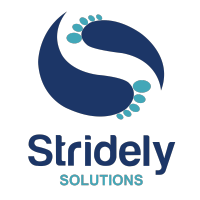As an enterprise bus service, Oracle Bus is an initiative adopted by Oracle to help companies transform their businesses while unlocking the potential of enterprise apps. This article is designed to help you understand Oracle Bus and the ways in which it can benefit your organization. As and when you are seeking ways to draft communication between enterprise applications, Oracle Service Bus is the best way to accomplish the above.
Architecture Overview
To begin, a short run down through the architecture of the Enterprise Bus Service.
The architecture of Oracle Service Bus is based on the Enterprise Service Bus. In an ideal sense, the bus is tasked with the job of delivering messages. The protocols followed are dependent on HTTP, SOAP, and Java Messaging Service (JMS).
OSB is designed to achieve high performance and optimal delivery of messages to services consumers or producers. An important thing to note is that OSB is driven by policies and allows business organizations to set up loose coupling amidst services and the service clients. It is also believed that OSB acts as the bridge that facilitates the processing of incoming messages to the service consumers while determining the route for the same.
What can it do for you?
Knowing what OSB is and what is its standard architecture, the next thing to ponder upon is its services. As mentioned above, OSB acts as the channel between applications, enabling the delivery of messages in your IT infrastructure. A few leaders consider it to act as an interface layer facilitating mediation as well as integration. It uses REST and SOAP API protocols to process communication. One of the prominent reasons why OSB has garnered such attention is that it eliminates the gap between the legacy systems and the modern ones. Leveraging the bus, organizations can effectively make their age-old applications communicate with the modern ones without delay. This way organizations can fine-tune their services without needing to replace older ones.
What are its key capabilities?
An important role played by OSB is inducing agility. The fact that it supports numerous standards, empowers your IT department with much-needed flexibility. In addition to the above, Oracle Bus being an Oracle product extends all of the features offered by the same. Meaning that it extends the scalability and reliability features as offered by Oracle.
What are OSB’s key components?
To note that OSB has a proxy that has the responsibility to hold the logic of the message, one that can handle the request and then process the response message. In addition to the above, OSB acts as the intermediary called by the service consumer. Service virtualization enables the team to replace the direct coupling, thereby offering a virtual endpoint. This leads to agility along with security and service versioning benefits.
Benefits of Oracle Service Bus
-
Service Virtualization
One of the most important aspects of SOA is that it allows direct communication between service consumers and providers. Meaning that any of the consumers have the freedom to access any of the providers, and across all platforms. Such a thing is also found in OSB, adding robustness and efficiency on a whole.
-
Loose Coupling
Allowing mediation between the service consumers and the service providers, OSB is known to offer loose coupling. This eliminates the need to build dependency, allowing the two to interact and communicate without affecting each other.
-
Location Transparency
To hide the actual location of the service endpoints from the consumers, OSB offers location transparency. At any point in time, the service consumers are expected to be aware of a single machine name and port name. This adds to the flexibility, allowing you to add/edit/remove them without recompiling.
-
Seamless Connectivity
Oracle Service Bus offers end to end connectivity options. No matter what the type of services are, OSB helps connect them and the packaged applications. To do the same, OSB makes use of adapters such as Siebel Adapter, Peoplesoft Adapter, etc.
-
Routing
Next to connectivity comes the job of data flow. That is to say, drawing a connection is the first step. Next, you need to ensure that both the message and data can flow through the channel. OSB in a way offers a secure, reliable as well as efficient way to transport swiftly. In addition to the above, OSB renders features and functionalities of advance routing which helps find the exact location of the data.
-
Performance
OSB is light in weight and also stateless. This accounts for its unmapped performance even when pushed to stressful conditions.
-
Transformation
Oracle Service Bus offers transformation capability at run time while supporting industry standards like XML, XQuery, XSLT, & XPath.
-
Service Polling
With Oracle Service Bus, you can be sure of service polling. Offering endless support, OSB has the potential to automatically detect services that are running live in an attempt to remove the unwanted ones. Needless to state that this accelerates performance dramatically.
-
Load balancing & Failover
Oracle Service Bus extends its support to load balancing algorithms so as to balance the load between endpoints. OSB can detect and remove failovers without manual intervention.
-
Monitoring
Talking about monitoring, Oracle Service Bus supports two-way monitoring.
Proactive Monitoring:
As the name suggests, Proactive Monitoring allows you to keep tabs on the dashboard and detect the performance in an attempt to adjust the server.
Reactive Monitoring:
Here, OSB can monitor only the server to trace specific conditions that might occur. Owing to the above, OSB sends out notifications and alerts to admin and users.
Conclusion
In the end, Oracle Service Bus is all you need to regulate the communication network of your enterprise applications. One thing to note is that you must implement the solution in the right way. Failing the above, you would experience more pitfalls than benefits.
To help you out, we at Stridely Solutions offer consultation, integration, implementation, and deployment services. We have 30+ years of experience in offering end to end IT consultancy solutions. Get in touch with us to know more!


